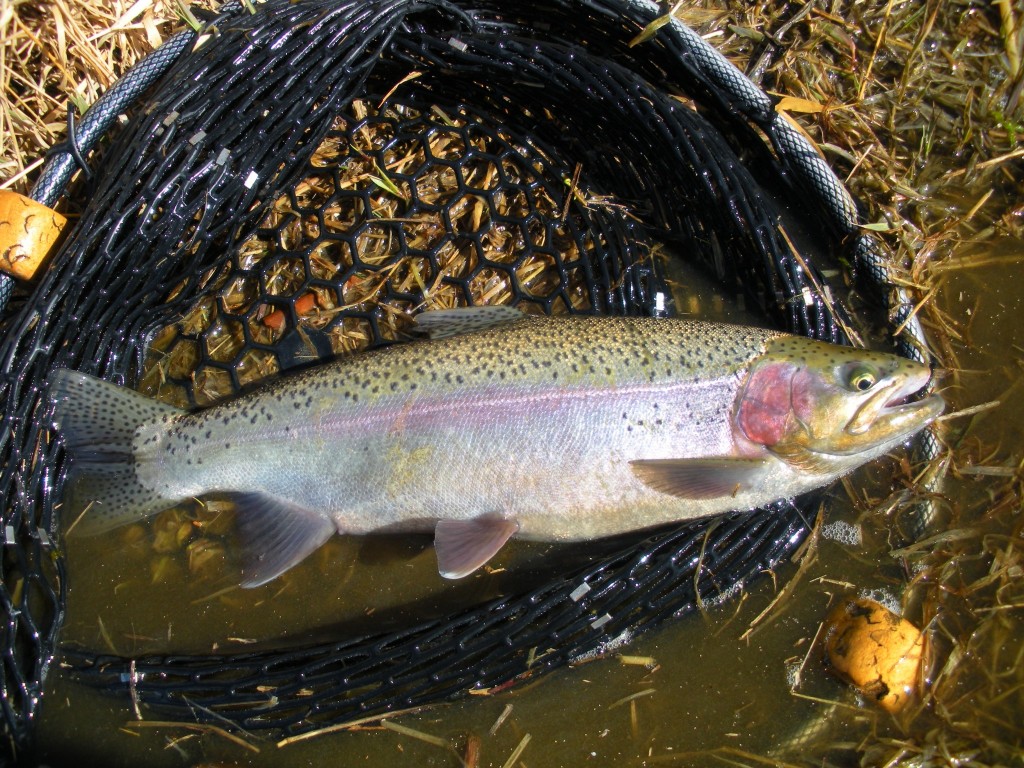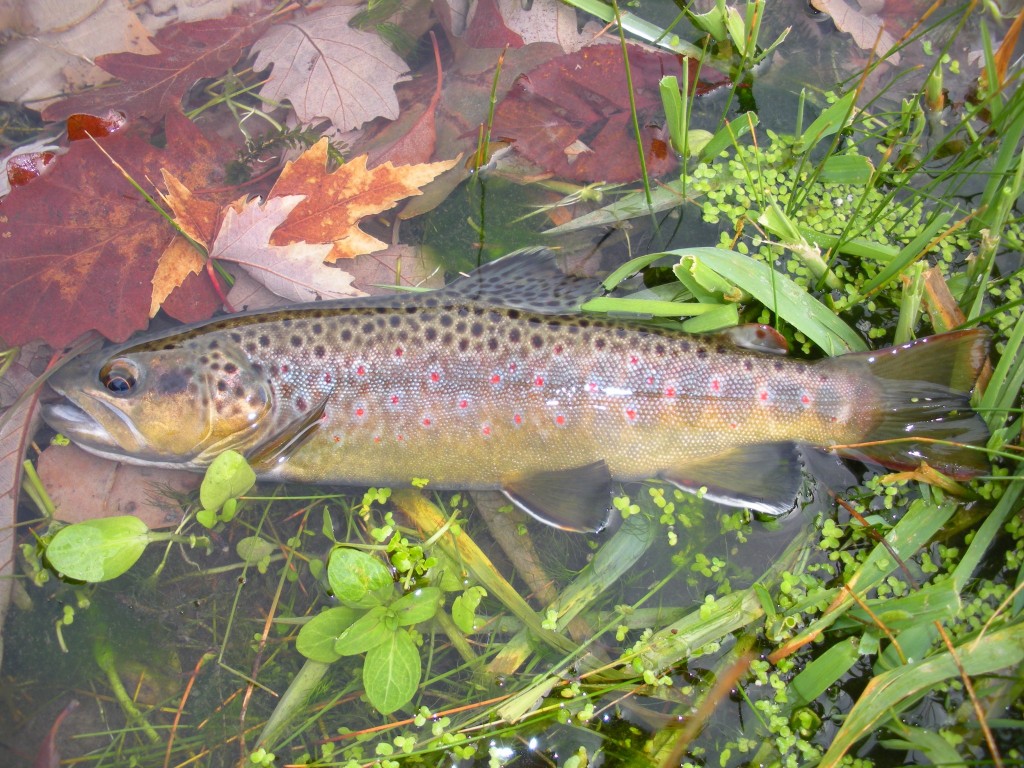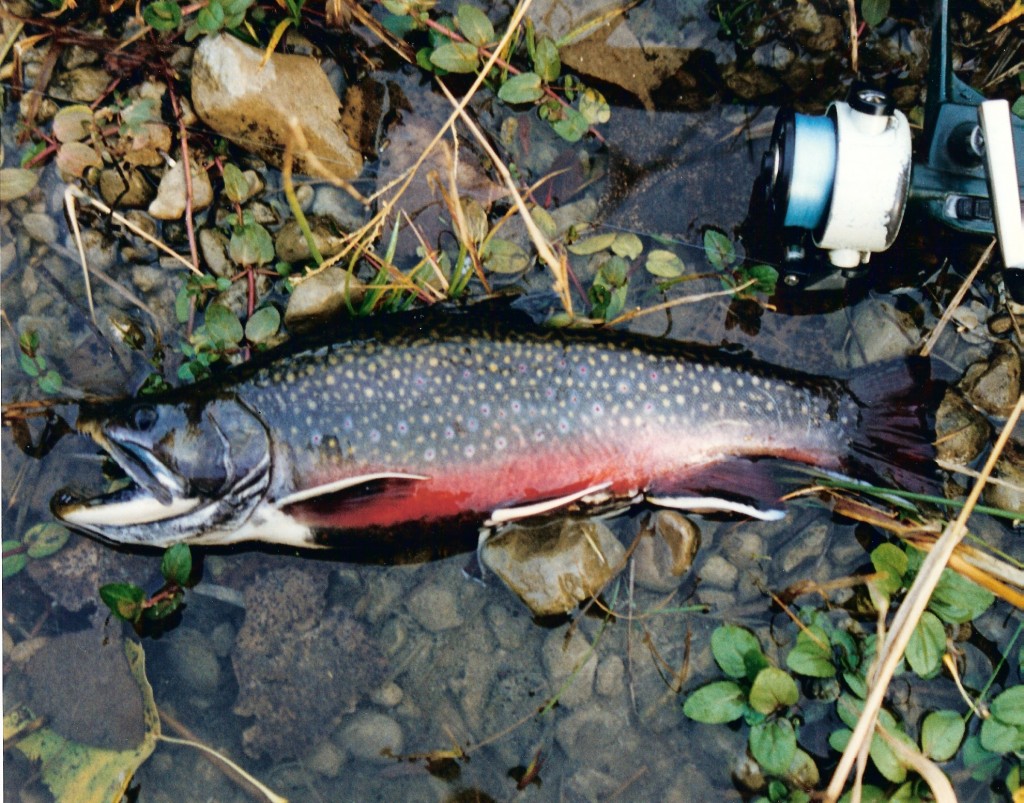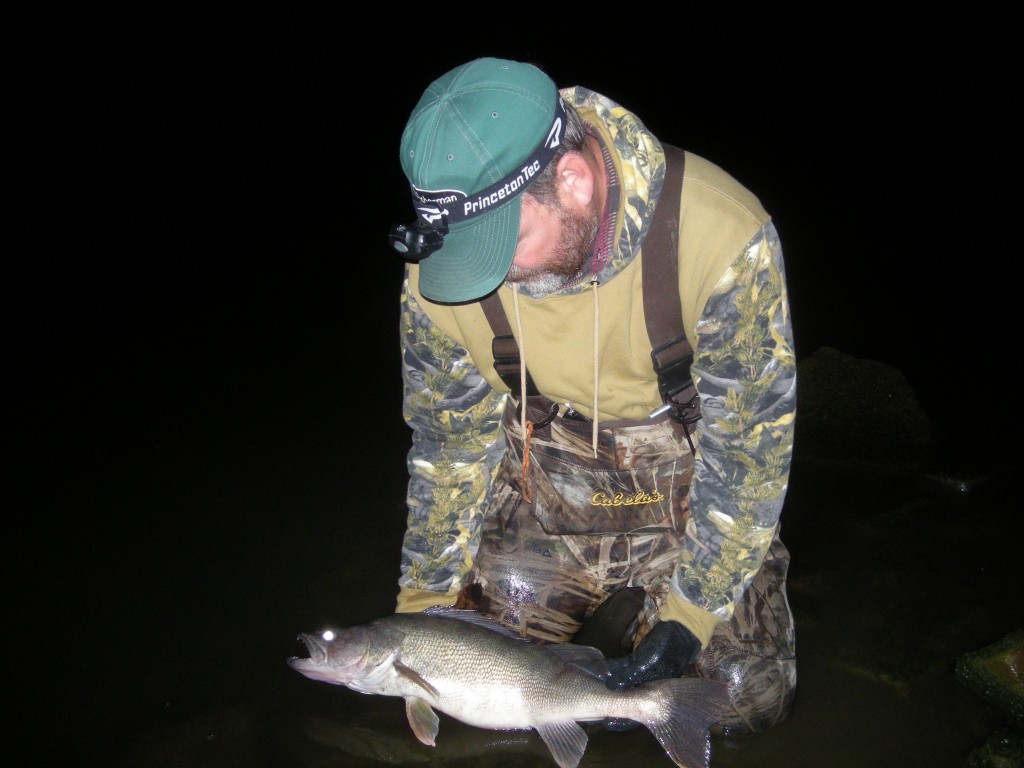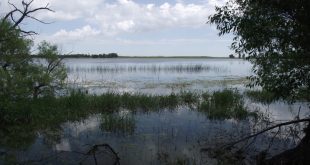Spring is upon us, no doubt about that. We will have some schizophrenic “ups” and “downs” in temperatures yet, we do every spring, but there is no doubt that it is here. This is the time of year that many anglers get “spring fever” and hurry to get on the water. On a warm afternoon, who can resist?
You will hear a lot of talk among anglers about spawning activities of a variety of fish this time of year. Some of that talk will be right, but there are a lot of misconceptions too. Let me see if I can cast some pointy-headed light on the spawning activities of some of our Nebraska fish. . . .
First of all, understand that fish invest a lot of energy into the production of “gametes”–a pointy-headed term that means sex products, eggs and milt in fish. The development of eggs and milt in our Nebraska fish takes weeks, months. As a matter of fact, many of our species begin developing gametes in late summer through fall of the year before. Some folks clean a fish they caught in the fall, see eggs and assume those fish are going to spawn in the fall. NO, they do not. Those are eggs developing for the spawn the following spring. During the cold of winter, those eggs and milt may not develop very much, so a lot of energy goes into producing those gametes in the fall, and then they are “on hold” over winter until the next spring. Then, depending on the species of fish and timing of their spawn, the eggs will rapidly mature in the spring and be deposited.
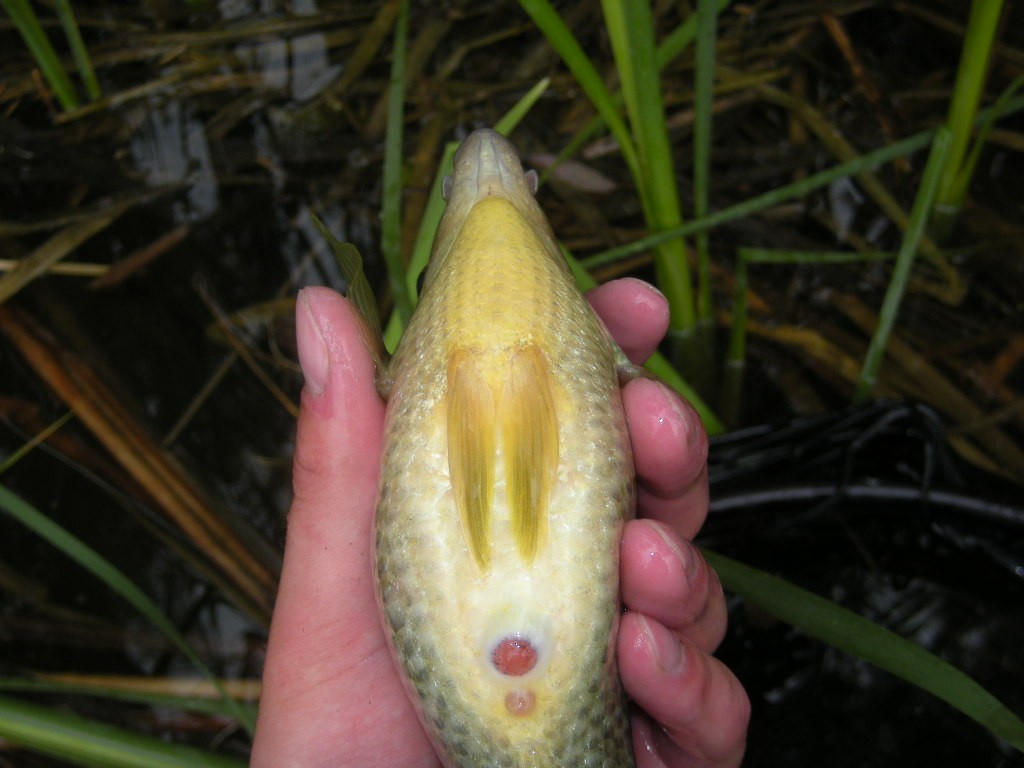
Nebraska is blessed with a variety of aquatic habitats and fish species. We have a variety of cold-water species, cool-water species and warm-water species. The spawning periods for those various fish progress through the year, every year. To give you an idea of the relative timing of spawning let me make a list from the earliest spawners to the latest. Of course I will have to add some comments along the way. . . .
Rainbow trout are a cold-water species, no doubt about it. There are many different strains of rainbow trout that have been cultured in fish hatcheries for years and years. Some of the differences in those strains is in the timing of their spawning and different strains may spawn at different times throughout the year. However, most rainbows are winter/late winter/early spring spawners. We do not depend on natural reproduction of rainbow trout in any Nebraska fisheries, but you may see some rainbows in spawning colors and exhibiting some spawning behavior in the winter and early spring.
Northern pike spawn right after ice-out and in years when we may have a late ice-out, spawning will start under the ice.
Walleye and sauger spawn next.
Yellow perch right after that,
and then muskies.
White bass, followed shortly by crappies.
Then smallmouth bass before largemouth bass.
Common carp do their thing right about the same time,
And then a variety of sunfish species, bluegill, rock bass, green sunfish, redear sunfish, etc. bed up.
Our catfish species are the last to spawn each year, and it is summer, into July, before the blues, channels and then flatheads occupy their spawning territories.
We actually do have two species of fall spawners in Nebraska waters, brown trout and brook trout.
I purposely did NOT mention any specific dates, water temperatures or any other supposedly “magic” triggers of spawning. Let me explain why. . . .
In freshwater fish there can be several variables that influence the timing of spawning. Those “cues” even can vary from one habitat to another even for the same species of fish. For example, fish living in moving waters, large rivers, can be triggered to spawn by rising water in the spring, while the spawning of the same species of fish living in standing water, a reservoir, may not be influenced by water levels at all. Water temperature and weather patterns can influence the timing of spawning, no doubt about that, but those “magic” temperatures that are often quoted, for example “largemouth bass spawn when the water is 62 degrees F”, are pretty much baloney. If absolute water temperatures were THE cue to spawning, there would be a lot of confused fish out there, and there would be a lot of spawns ruined by spring warming trends followed by strong cold fronts and dropping temperatures.
As a matter of fact, research has shown that for cool-water species like yellow perch and walleyes, a certain amount of time with cold water temperatures during the winter are necessary for gametes to properly develop. For example, the walleyes likely will spawn at about the same time every year and unseasonably warm weather early in the spring may not necessarily accelerate the spawn as much as it may reduce successful spawning.
What about “climate change”? Everyone has an opinion on that and unfortunately some of those opinions are based on politics as much as anything. I know this, I have lived in Nebraska all my life and the climate has always been changing. We go through wet cycles, dry cycles, warm cycles, cool cycles. Fish and other wild creatures are resilient and adaptable to a lot of changes, so you are not going to get a prediction out of me one way or another. The answer I will give you is that we will just have to wait and see. I have seen some research indicating that some fish are spawning earlier due to global climate change. However, at the same time, the same research found that the timing of the spawn for another species of fish in the same body of water had not changed at all.
Photoperiod or the amount of daylight is another cue that triggers reproductive behavior in a lot of wild creatures. I believe photoperiod is an important cue for the timing of spawning for most Nebraska fish. Therefore, spawning will tend to occur at about the same time every year. Many of you have heard me say that the walleyes spawn in Nebraska April 1. That is a good rule of thumb and I have seen walleye spawning April 1 literally the day after the ice went out, and I have seen walleyes spawning April 1 when we have had very warm weather for most of the month of March. Yes, weather patterns may influence spawning activity but it only “modifies” that activity, makes it vary a bit from year to year. Weather patterns do not change spawning times by weeks.
Also keep in mind that Nebraska is a large state with a great deal of variability in habitat, weather, and climate from one corner of the state to the other. Yes, some of our species of fish will tend to spawn earlier in some parts of the state. For example, you may see largemouth bass spawning behavior as early as late April in southeast Nebraska ponds, while that same species will still be spawning into June in north and west parts of Nebraska.
That brings up another good point–that the spawn period for any species of fish lasts over a period of days, probably weeks. Not all fish spawn at the same time; in any population there will be individual fish that tend to spawn early and there will be individual fish that tend to spawn late. Again, that is a survival strategy that will overcome swings in weather conditions. If all the fish in a population spawned at the same time, one ill-timed cold snap could eliminate an entire year’s reproduction.
I like to wink and say that the males arrive early at the “dance” and stay late. It is typical to see males on spawning habitats and exhibiting spawning behavior sometimes weeks before any of the females “join the party”. Typically, males come early and stay late while females show up when they are ready to deposit eggs, do their thing, and then get outta there.
Another point to be made is that spawning activity may concentrate fish and make them relatively easy to locate, but during spawning the bite slows. Actual feeding activity may occur right up until the fish are ready to spawn, and the pre-spawn period is often an excellent time to fish for a variety of species. But, once spawning begins, those fish have other things on their mind, and the fishing actually slows. Yes, I know, you can present baits on bluegill beds or tempt male bass that are guarding a nest to pick up a bait. Yes, I know that all the adult walleyes in a Nebraska reservoir are concentrated on the rocky dam faces during the spawn, and even though those fish are NOT interested in feeding you can still tempt a few, mostly the smaller males but occasionally a big female, into hitting a bait. But, I also know that actual feeding behavior is much better when the fish are not spawning.
If you target pre-spawn and post-spawn fish, you will have better success. In fact, if you fish for a variety of species, and fish different waters, you can “ride waves” of good pre-spawn and post-spawn fishing for several different species of fish. For example, when the walleye spawn is in full bloom on your local reservoir, switch to some big pre-spawn bass on a nearby pit or pond.
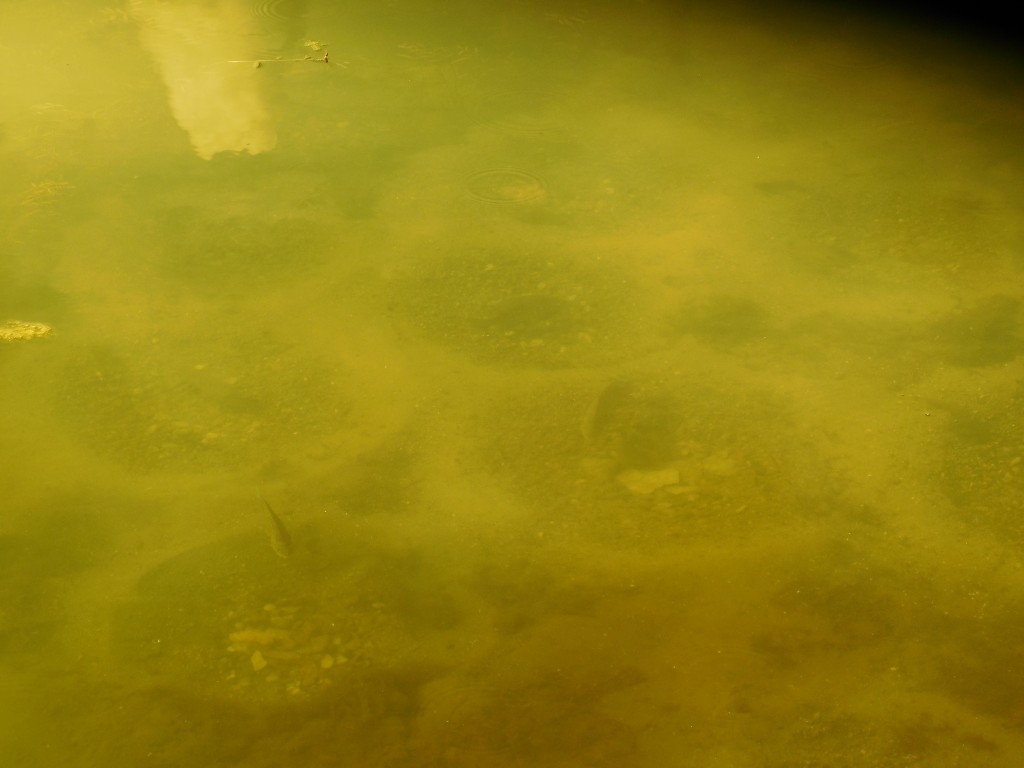
We have no closed seasons for fishing any Nebraska waters for any species of fish. Those closures are traditional in some other states and in some specific locations they may be needed to protect spawning fish. Season closures also generate a lot of “opening day” excitement when the seasons open, and is in fact why some of those traditional closures remain. We have had no biological reason to have closed seasons for any species of fish in Nebraska. Fish are incredibly productive and produce thousands of eggs, often hundreds of thousands of eggs per female. In most situations, complete protection of any fish species during the spawn is not needed because successful reproduction by only a few individuals is all that is required to maintain populations. Even though I just told you that fishing is actually better during times other than when the fish are spawning, if folks want to fish, we like them to have the opportunity to fish!
Having said that, I do believe that it is important to protect big fish because those fish are likely some of the best brood stock in a population. The fact that an individual fish reached exceptional size suggests that fish has been one of the most successful at surviving, is one of the fastest-growing, and likely has traits, genetics, that would be desirable in a population. Even if that population is maintained by stocking, big fish are still rare and the best candidates for catch & release. And, I would point out that if those fish are important to the population, it makes no difference if they were harvested 5 minutes before they spawned or months before the actual spawn–if they were harvested they were still removed from the population. If at all possible, turn the big ones loose, regardless of species and regardless of when they are caught!
 Nebraskaland Magazine
Nebraskaland Magazine
